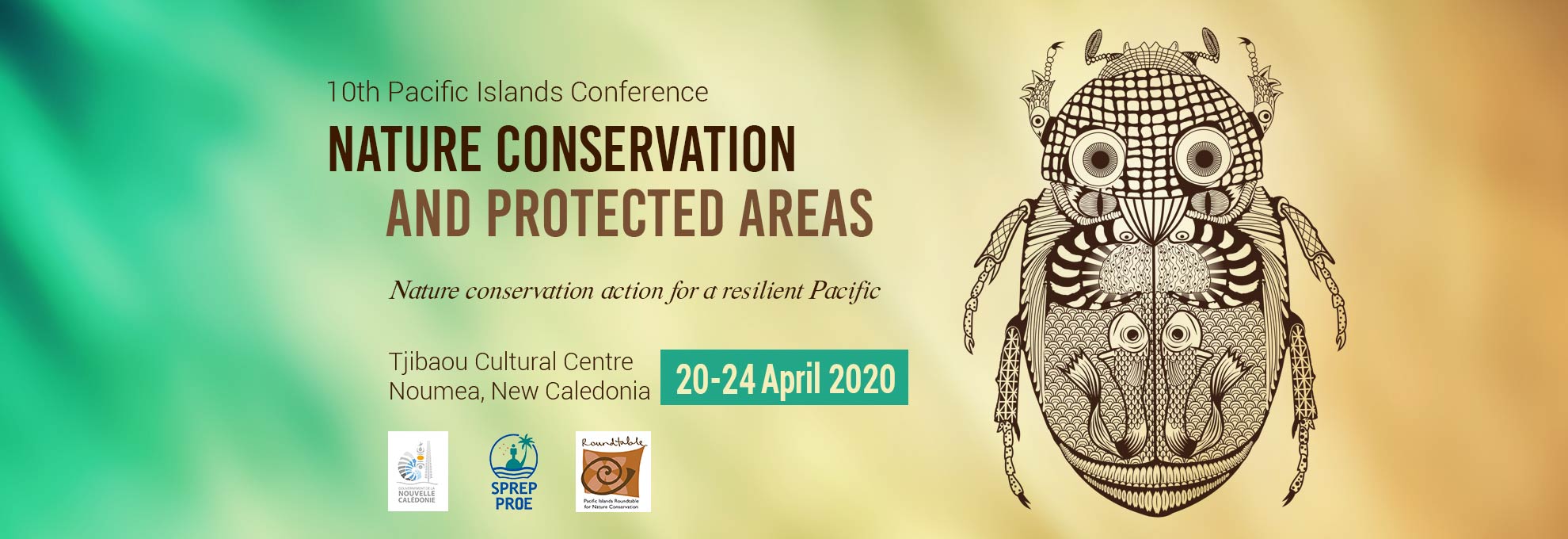About the Conference Promotional Image
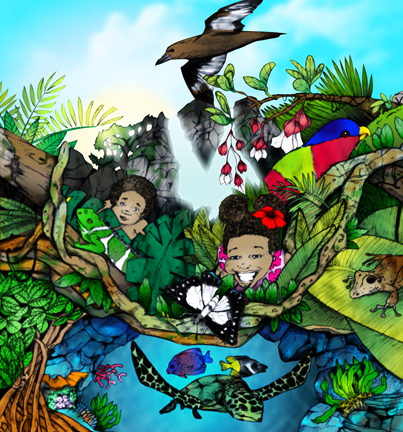
The 9th Pacific Islands Conference on Nature Conservation and Protected Areas is a gathering of experts and practitioners in the field of nature and biodiversity conservation in the Pacific. This promotional poster celebrates the unique biodiversity of the Fijian Islands which is the host country of this event. The Fijian Islands are just a small representation of the unique biodiversity found throughout the vast numbers of island in the Pacific Ocean.
The promotional image is the artist’s (Duane Leewai) impression of both the marine and terrestrial biodiversity found throughout the Fijian Islands and includes species that are endemic to this corner of the world.


The children take centre stage of this image as they are our hope and future. Their smiles epitomize the friendly nature of the Fijian people.
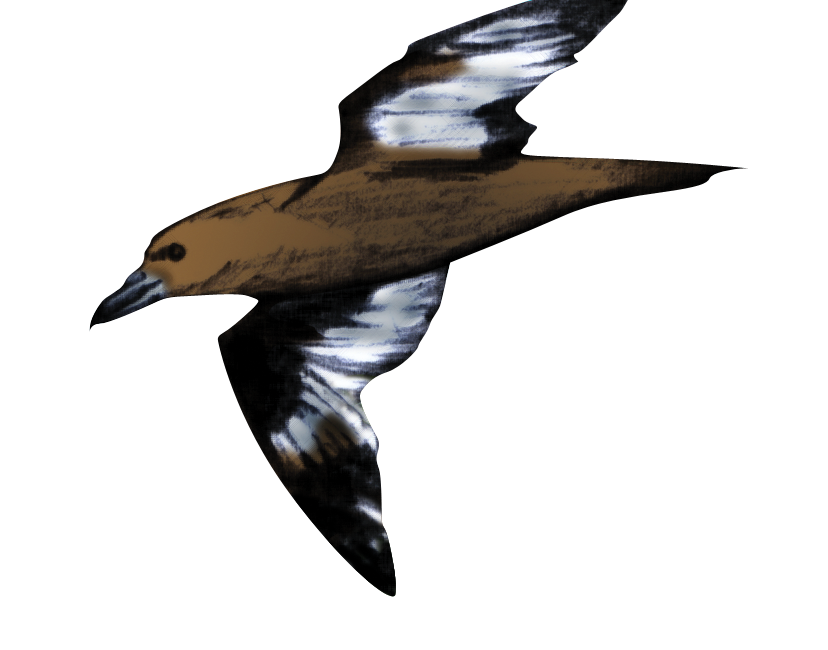 At the top of the poster is the Fiji Petrel (also known as MacGillivray’s Petrel) from Gau Island in Fiji, one of the world’s most elusive birds. This species is classified as critically endangered with an estimate population of less than 50 birds, confined to a small breeding area in this part of Fiji. (For more information, visit: http://en.wikipedia.org/wiki/Fiji_Petrel)
At the top of the poster is the Fiji Petrel (also known as MacGillivray’s Petrel) from Gau Island in Fiji, one of the world’s most elusive birds. This species is classified as critically endangered with an estimate population of less than 50 birds, confined to a small breeding area in this part of Fiji. (For more information, visit: http://en.wikipedia.org/wiki/Fiji_Petrel)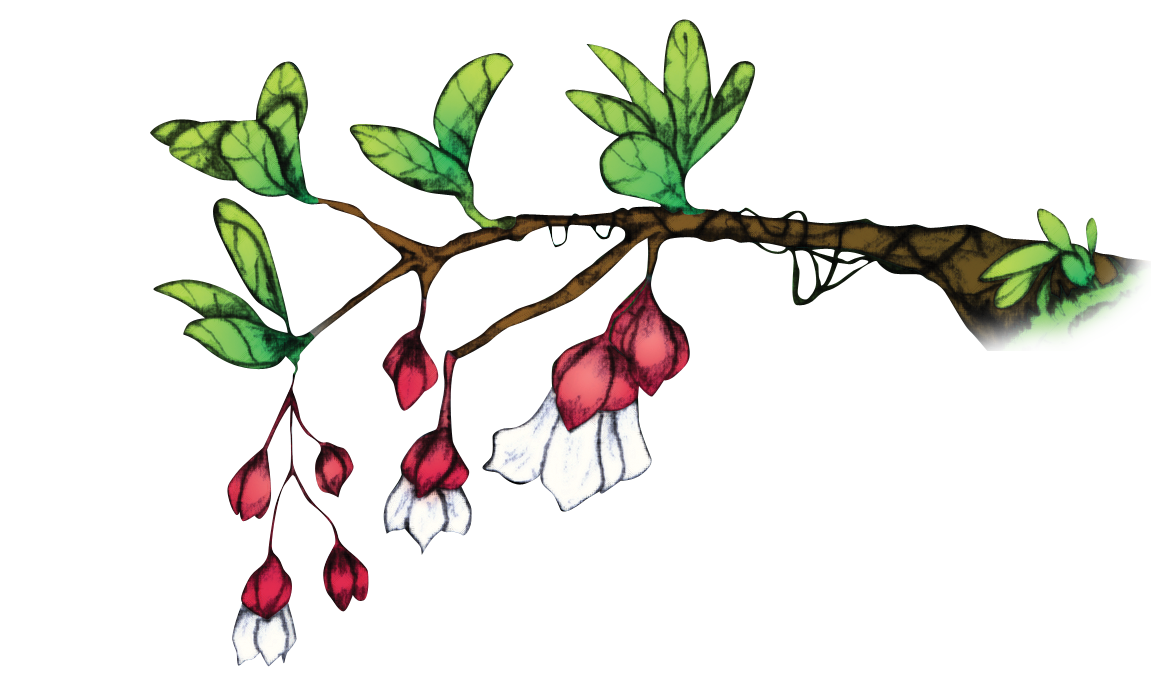 Medinilla waterhousei, commonly known as Tagimoucia (tahng-ee-mow-thee-a), is endemic to highland rainforest of the Fijian island of Taveuni. It only grows at altitudes of over 600m and is the floral emblem of Fiji. A local legend attached to the flower says it represents the tears of a young girl forbidden by her father to marry the boy of her dreams and, as she wept, her tears became the flower. (For more information, visit: http://en.wikipedia.org/wiki/Medinilla_waterhousei)
Medinilla waterhousei, commonly known as Tagimoucia (tahng-ee-mow-thee-a), is endemic to highland rainforest of the Fijian island of Taveuni. It only grows at altitudes of over 600m and is the floral emblem of Fiji. A local legend attached to the flower says it represents the tears of a young girl forbidden by her father to marry the boy of her dreams and, as she wept, her tears became the flower. (For more information, visit: http://en.wikipedia.org/wiki/Medinilla_waterhousei)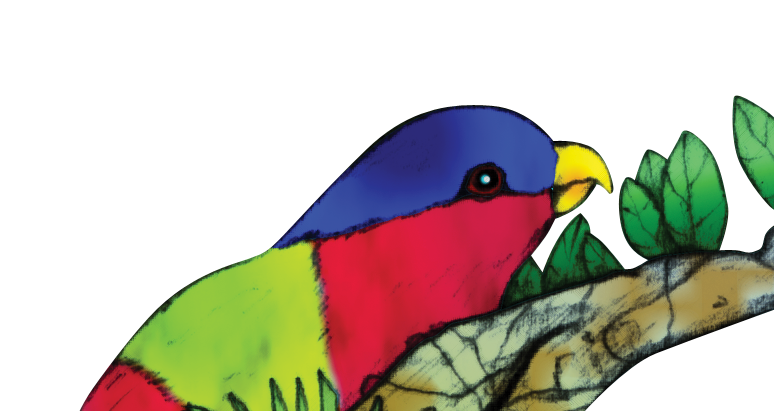 Collared Lorikeet, locally known as Kula, is a brightly coloured parrot found only on the larger islands of Fiji and the Lau Group. (For more information, visit: http://en.wikipedia.org/wiki/Collared_Lory)
Collared Lorikeet, locally known as Kula, is a brightly coloured parrot found only on the larger islands of Fiji and the Lau Group. (For more information, visit: http://en.wikipedia.org/wiki/Collared_Lory)
 The Fiji Tree Frog (Platymantis vitiensis) is one of two frogs endemic to Fiji. It is found mainly in the wetter, eastern islands of Viti Levu, Vanua Levu, Taveuni and Ovalau. It is particularly distinctive due to the shape of its toes, ideal for climbing, and the fact that it undergoes direct development in the egg, without a larval stage. (For more information, visit: http://en.wikipedia.org/wiki/Fiji_Tree_Frog)
The Fiji Tree Frog (Platymantis vitiensis) is one of two frogs endemic to Fiji. It is found mainly in the wetter, eastern islands of Viti Levu, Vanua Levu, Taveuni and Ovalau. It is particularly distinctive due to the shape of its toes, ideal for climbing, and the fact that it undergoes direct development in the egg, without a larval stage. (For more information, visit: http://en.wikipedia.org/wiki/Fiji_Tree_Frog)
 In the middle of the image we have the Swallow Tail Butterfly (Papilio schmeltzi), a common endemic butterfly of Fiji found throughout the Fijian archipelago. (For more information, visit: http://en.wikipedia.org/wiki/Papilio_schmeltzi)
In the middle of the image we have the Swallow Tail Butterfly (Papilio schmeltzi), a common endemic butterfly of Fiji found throughout the Fijian archipelago. (For more information, visit: http://en.wikipedia.org/wiki/Papilio_schmeltzi)
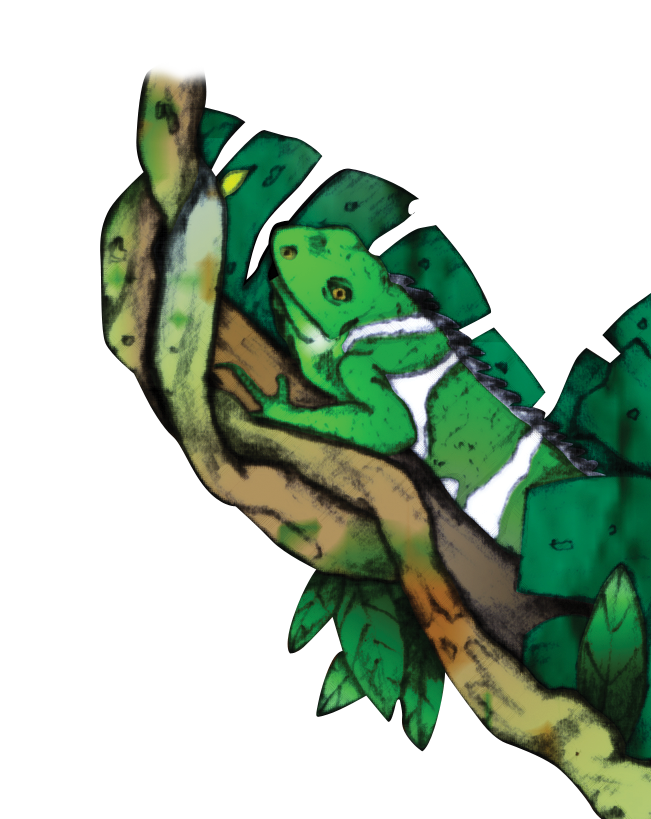 Fiji Crested Iguana is a recently discovered species that is endemic to Fiji and restricted to dry forest habitats. This habitat is one of the most threatened in the Pacific and it is therefore no wonder the Fiji Crested Iguana is considered critically endangered. It stands apart from the common species Iguana as it is larger and has distinct crest spines. (For more information, visit: http://en.wikipedia.org/wiki/Fiji_Crested_Iguana)
Fiji Crested Iguana is a recently discovered species that is endemic to Fiji and restricted to dry forest habitats. This habitat is one of the most threatened in the Pacific and it is therefore no wonder the Fiji Crested Iguana is considered critically endangered. It stands apart from the common species Iguana as it is larger and has distinct crest spines. (For more information, visit: http://en.wikipedia.org/wiki/Fiji_Crested_Iguana)
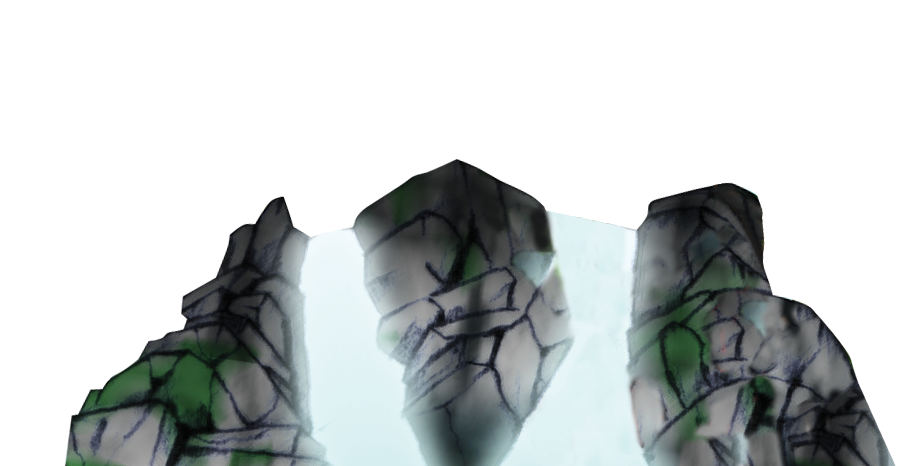 Bouma/Tavoro Waterfalls are a spectacular series of three waterfalls within the Bouma National Heritage Park on the island of Taveuni, part of these waterfalls feature in this image. These idyllic waterfalls provide popular swimming spots to cool off from the tropical heat. (For more information, visit: http://www.world-of-waterfalls.com/south-pacific-tavoro-waterfalls.html)
Bouma/Tavoro Waterfalls are a spectacular series of three waterfalls within the Bouma National Heritage Park on the island of Taveuni, part of these waterfalls feature in this image. These idyllic waterfalls provide popular swimming spots to cool off from the tropical heat. (For more information, visit: http://www.world-of-waterfalls.com/south-pacific-tavoro-waterfalls.html)
 At the bottom of the poster we have the Hawksbill Turtle. While this turtle can be found in the tropical reefs of India, Pacific and Atlantic oceans it is considered critically endangered due to human fishing practices. In Fiji, the Hawksbill Turtle have nesting sites right around the larger island of Viti Levu. (For more information, visit: http://en.wikipedia.org/wiki/Hawksbill_turtle)
At the bottom of the poster we have the Hawksbill Turtle. While this turtle can be found in the tropical reefs of India, Pacific and Atlantic oceans it is considered critically endangered due to human fishing practices. In Fiji, the Hawksbill Turtle have nesting sites right around the larger island of Viti Levu. (For more information, visit: http://en.wikipedia.org/wiki/Hawksbill_turtle)
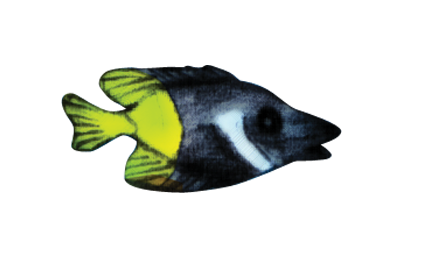
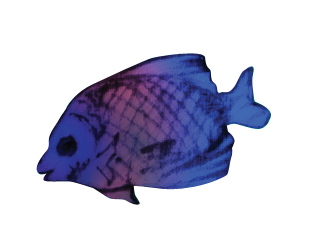 The Bicoloured Foxface (Siganus uspi), yellow and purplish-brown fish, is found among hard corals and is endemic to Fiji. The Fiji Blue Midnight Angel Fish (Centropyge deborae) which is found in deep reef pinnacles and is considered a new species, so far only found around the Fijian Islands. (For more information , visit: http://eol.org/pages/211367/details or http://www.fishbase.org/summary/Centropyge-deborae.html·)
The Bicoloured Foxface (Siganus uspi), yellow and purplish-brown fish, is found among hard corals and is endemic to Fiji. The Fiji Blue Midnight Angel Fish (Centropyge deborae) which is found in deep reef pinnacles and is considered a new species, so far only found around the Fijian Islands. (For more information , visit: http://eol.org/pages/211367/details or http://www.fishbase.org/summary/Centropyge-deborae.html·)
